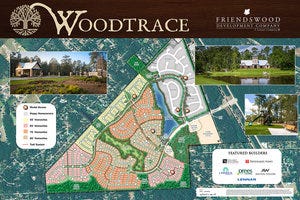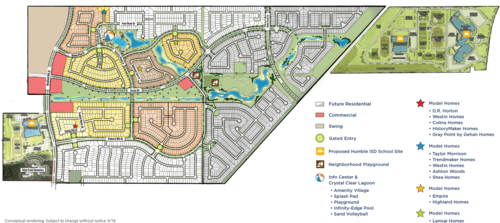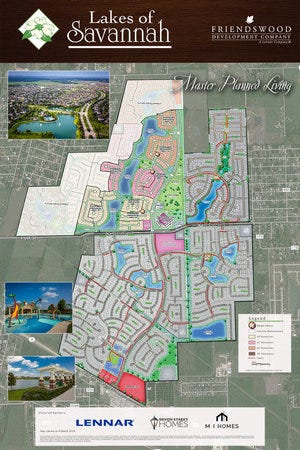Your 2019 resolution: Go forth and plan your neighborhood
In the early days of the New Urbanism movement, Andres Duany used to frequently mention in presentations that our inner cities need to be master planned. That statement used to really perk me up. What did he mean by that? Aren’t they already master planned? Andres does like to provoke, but this was not him just poking at cities or planners. Rather, it was a response largely to working with developers on new, master-planned communities on greenfield sites. It’s another of the great lessons learned and kernels of wisdom we should remember from working in those original TND’s (Traditional Neighborhood Developments) starting in the late 1980’s. For reasons too long to get into here, I’ll just say that while you might think your city or neighborhood has a future plan, it most likely it does not.
First off – what is a master-planned community (MPC)? The very short version is that these are entire, branded developments created by a master developer. The developments aren’t just one type of house or housing. Instead, they often are composed of single-family houses of different sizes and styles, apartment homes, shops, and more. You probably have a community or two like this towards the edge of your city. MPC’s became popular starting in the 1970’s, and really picked up steam in the 80’s and 90’s. Resort or destination areas often have multiple versions.




One of the reasons MPC’s became so popular and loved by public planners and developers was because it was a wholly-planned approach to land use, infrastructure, transportation and environmental design. Yes, the vast majority of those communities were suburban in nature and designed for a fixed, “final” condition, but the certainty and ease of process was a remedy for the ills of site-by-site approaches to zoning and infrastructure.
Since nearly all new development happening in the 60’s through the 80’s was suburban and greenfield in nature, cities didn’t feel a need to apply that thinking or approach to older neighborhoods. Nor, in fact, did many planners working in older cities see the approach as something useful to them.
That all started to change in the 90’s and 00’s, especially with the revival of interest in urban living. The entire movement for form-based codes came out of the experience of working on those greenfield MPC’s, which new urbanists called TND’s. The first form-based code I wrote, for example, was for New Longview in Lee’s Summit, MO, which was a suburban site (albeit a historic farmstead). As practitioners, we all learned important lessons in those days and eventually modified our codes as a key implementation tool for infill and redevelopment. If you know anything about form-based codes, you know that the first and most important step is a master plan, detailed to the lot and block.
Sadly, the application of that approach has been spotty at best. The Great Recession obviously put a big dent in cities’ ability to be proactive, and the effects have lingered for years. As infill and redevelopment have shifted to become very big, critical issues in so many places, the need is much more obvious now. It’s a great time to revive this discussion, and why it’s so important.
Planning for the next wave
Over the last few months, I’ve pieced together a series of posts outlining an approach to planning, development and implementation for those that care about the future, about success and about the values espoused in the Charter of the New Urbanism. Briefly, it includes creating a compelling vision, finding your $4 billion opportunity, detailing the value of fine-grained urbanism, being clear that most cities are not like the ones we read about typically, appreciating small steps and Missing Middle, and savoring small parcels.
There’s a fairly dark and increasing pessimism in some quarters of my field these days, which is perhaps aligned with a general pessimism in the American public about the future. I feel it, and get caught up in it myself from time to time. In my heart of hearts, I do think there’s a good chance for turbulent economic waters ahead, given our profligacy with infrastructure, public money and debt. We’ve been a very wealthy country for long enough that we’ve largely stopped caring as a culture about sound, long-term fiscal decision-making in our private and public lives. We’ve embraced a model of economic development in our cities that makes a lot of big, risky bets because of our impatience. I do think some circumstances will force us to change, and that it will be a tough transition for many.
But I also do think there’s cause for long-term optimism. We’ve had very difficult times before, and come through them better as a people. I think it’s important to start thinking and planning now for good things to happen, and for the opportunities that the future will present. I am not a pessimist nor a doomsayer. In fact, I feel that there are more really good people now than ever, and people looking to make a positive difference in their community. I see it everywhere I go, despite the barrage of negativity in the air. I write primarily to help people in leadership positions now and in the future to think about what can be planned for, and what the next wave or model can look like. Despite some of our difficult current financial circumstances, I am highly encouraged by changes that have happened in my own lifetime.
When I’m talking about master plans, I’m not necessarily talking about big, ambitious plans like we just did in Savannah, though I think those are needed too. Mostly I'm talking about the nitty-gritty, detailed examination of how our older, walkable neighborhoods are today and what they can evolve into. That necessarily involves a block-by-block approach to land use, transportation, infrastructure and other concerns. Most cities have glossy planning documents that outline visions, and have pages of lists of goals. But very few do the detailed work needed to successfully plan for change. Doing so necessarily involves setting a 15-20 year vision, and working collaboratively on how it gets implemented. What does the zoning need to be? Are the sewers adequate? Where will the water drain? Do we need to adjust our street designs and public transportation plans? A great deal of this can be a local government staff exercise after a vision is established. The key is to coordinate all thinking and projects, so that we can then more flexibly allow cities to grow and change - to be messy.
In today's environment, it's hard to do that, because there's no sense of what we are headed towards for various neighborhoods. If we allow radically more density, how does that impact everything else? How do we plan for underground and above-ground infrastructure? These are serious questions that need to be asked and thought through. It doesn’t need to take months or years (more on that in a minute), but it does need the application of time and expertise.
That was the beauty of the suburban MPC: it figured it out the vision and details upfront, and then allowed a relatively flexible process to build and develop. We need more of that for our pre-suburban and early-suburban cities. Existing local government staff can largely do this. It mostly just requires internal coordination and teamwork. The planning and visioning piece might need a little outside guidance, but there's no reason that proactive municipal staff can't take this on, and do it quickly. Once these steps are worked through, we can then go forth confidently with the business of changing zoning and processes so that it's easier to meet the demand.
The good thing is, nearly all cities have staffs of people capable and already paid to do this work. They just need the vision about where the future is headed to provide solutions, and to work in a more integrated manner. Leadership needs to ensure that the work happens in a focused, positive and interdisciplinary manner. After using the Scrum method (great book here to read) I’ve become a huge fan of the approach for teams. It’s immensely powerful as a way to manage time, prioritize and be able to measure success.
The goal of this approach to planning is to facilitate change, to embrace a messier process, and to allow more bottom-up activity. If our local governments fully embrace that mission, have a sense of urgency and put the full power of their resources toward it, we can be well prepared for the future and better the lives of people in all of our communities.
2019: What can you do?
Since 2018 is rapidly coming to a close, I’d like to offer this fairly simple homework for you in 2019. Here’s an action plan:
1. Find one neighborhood or small area that’s changing today, and poised for change over next several years.
2. Do a quick, intense public process that truly visualizes and analyzes the possibilities. It must be drawn in detail, not just with fat markers. Run the numbers. Use tactical urbanism to demonstrate ideas in real time if you have an opportunity. Find your inspiration locally. This need not be an expensive nor time-consuming process.
3. Once you’ve got a vision, work with your local government staff to plan the details – the infrastructure, coding, and management changes needed to make it happen. Use the Scrum method so that the plan doesn’t languish in bureaucratic silos.
4. Then, Adopt your plan and strategy. Let it live, let it be messy. Resist the urge to micro-manage the results.
I hope this series of posts has been helpful to you. It’s been helpful to me to write it all down, and flesh out thoughts that have been kicking around for many years. I’m going to shift gears in some of my next posts, including an upcoming series of posts focused just on transportation issues and solutions. If you ever have suggestions for further topics, please drop me a line.

